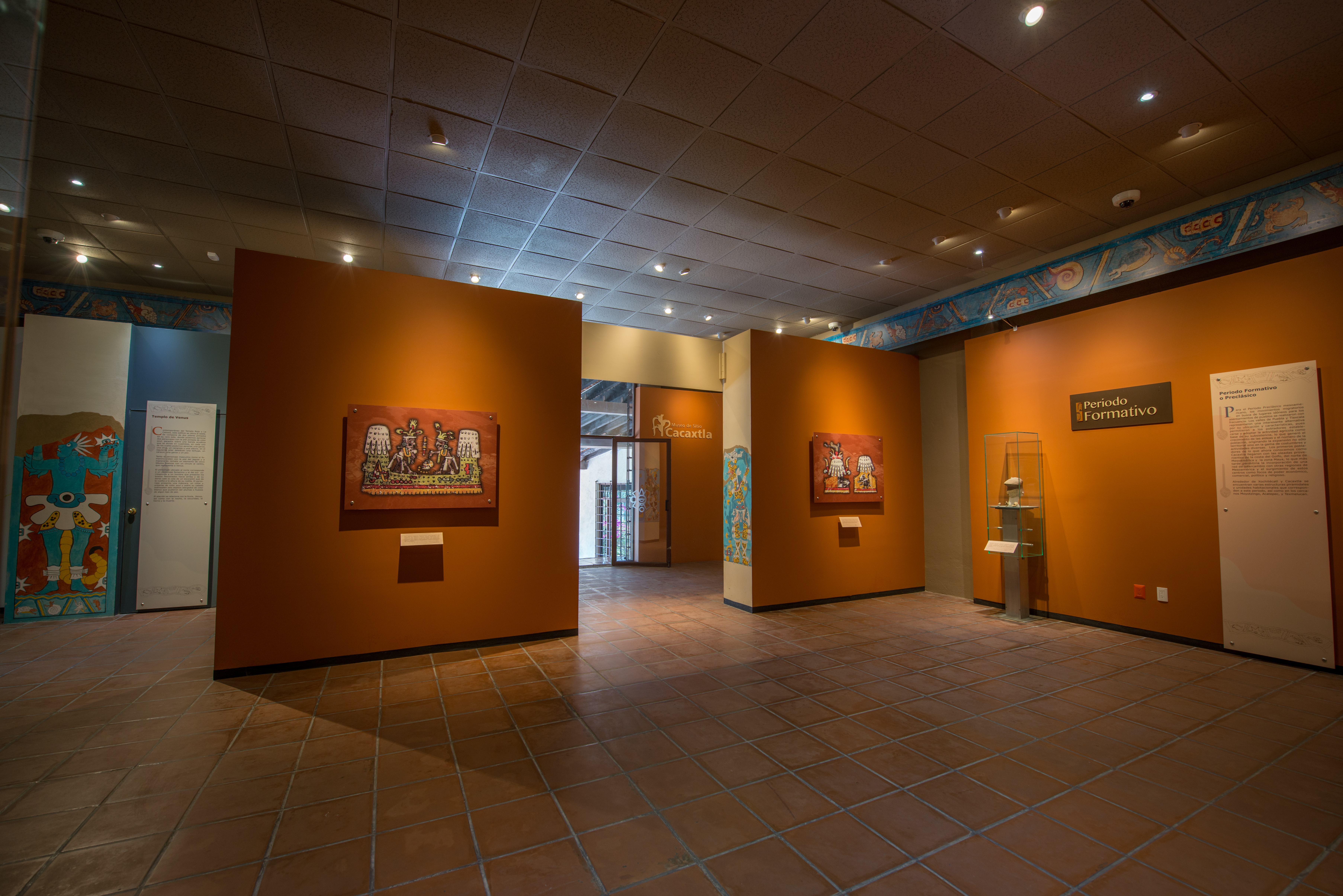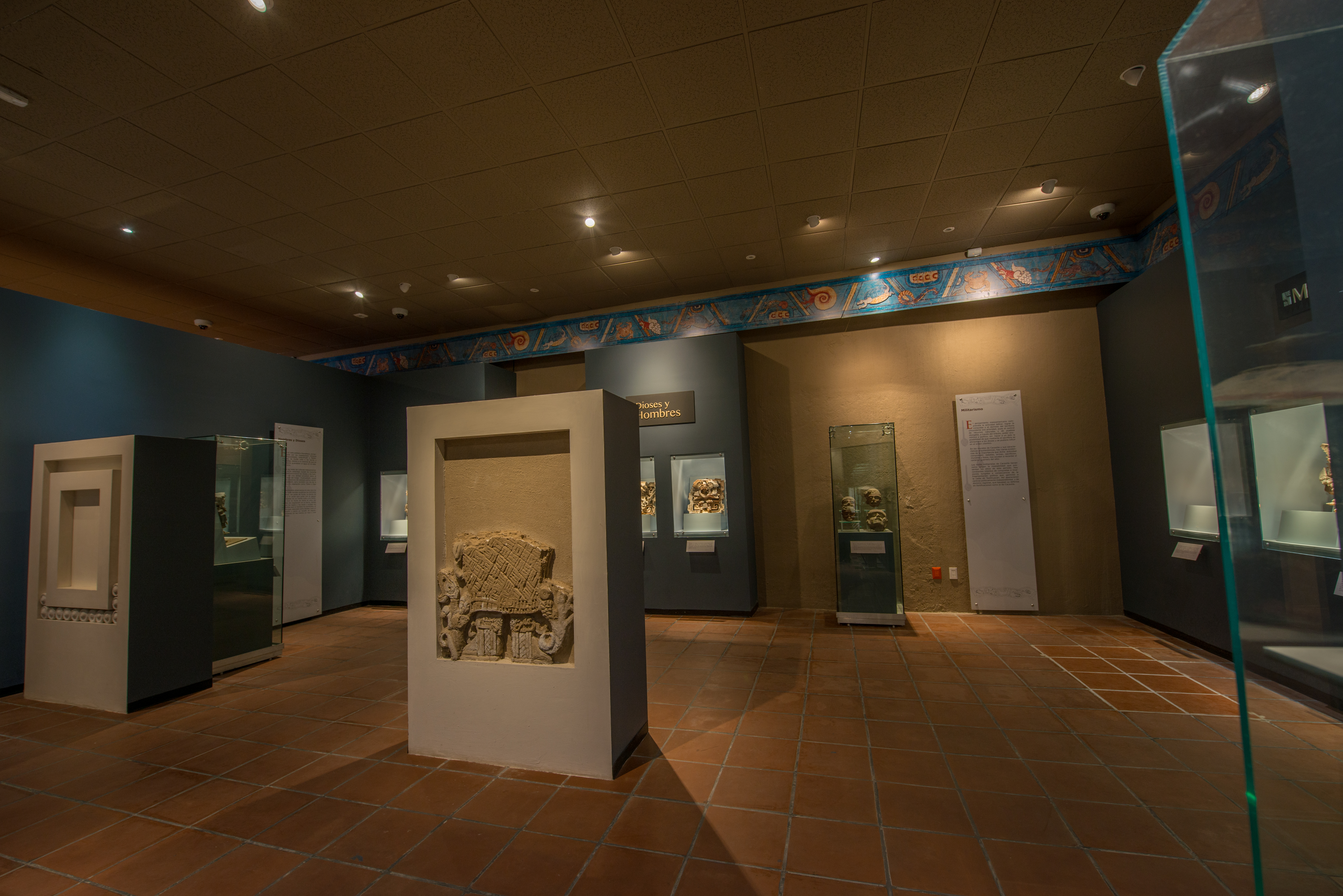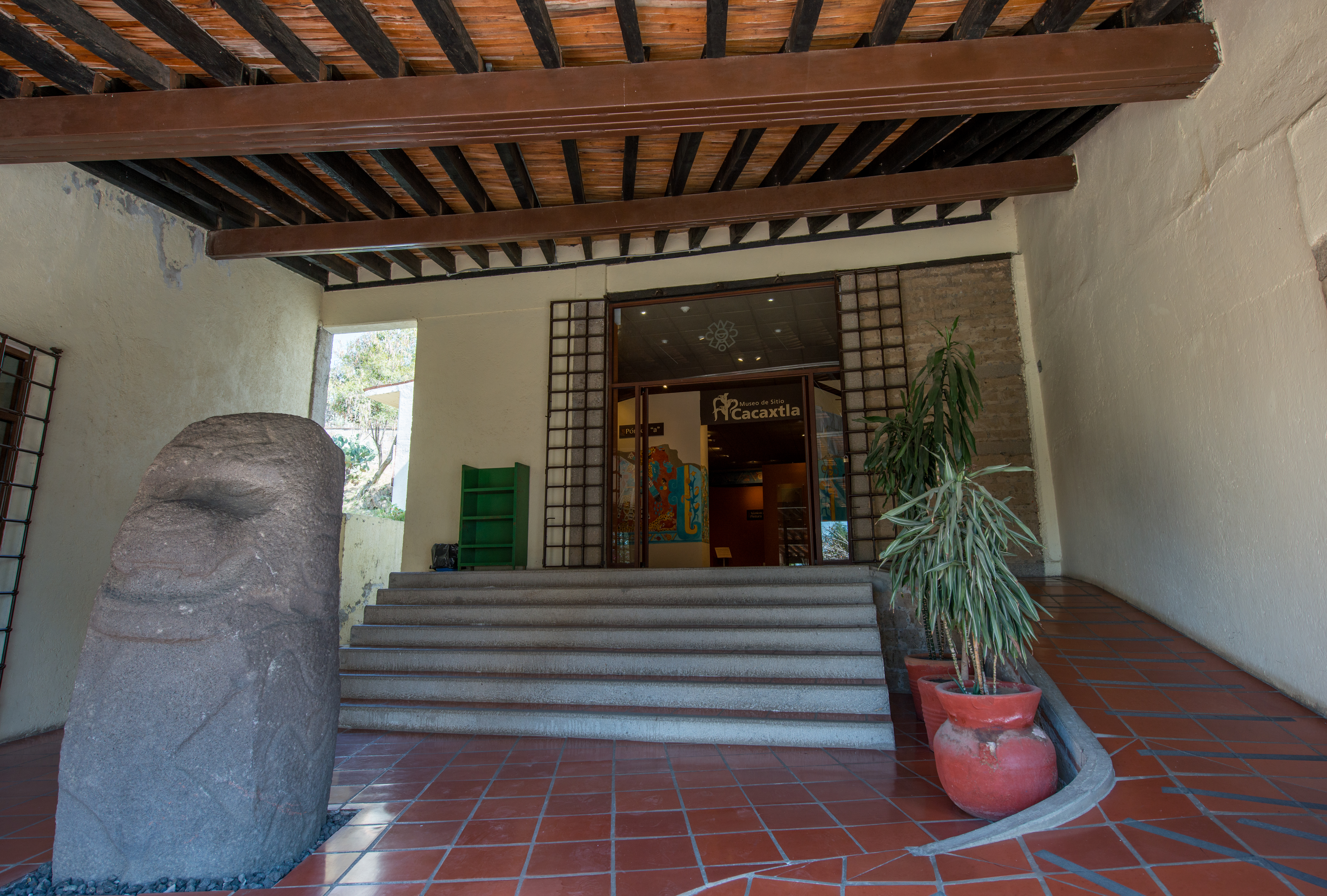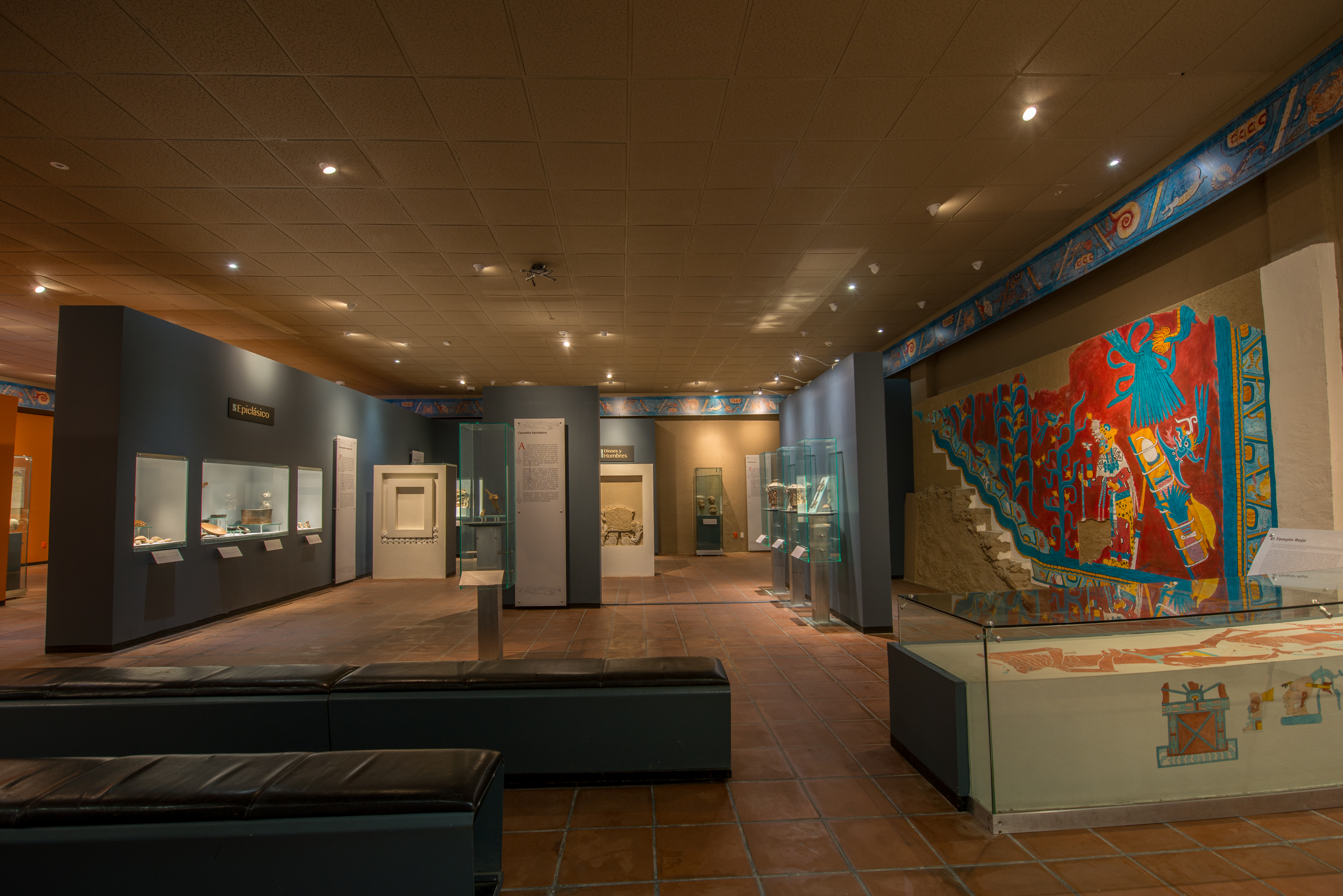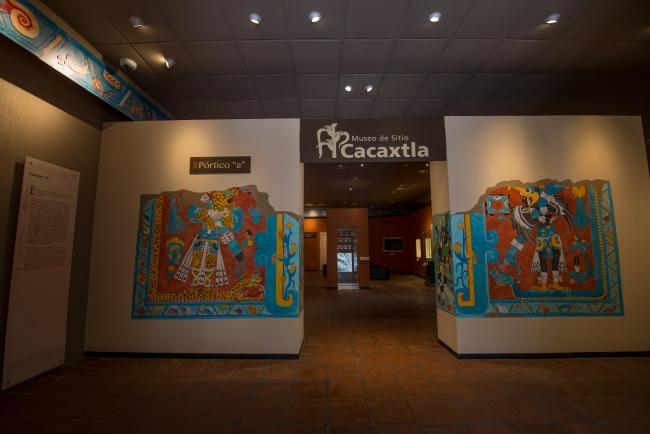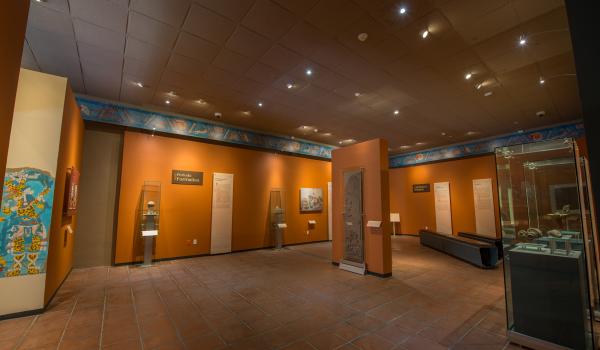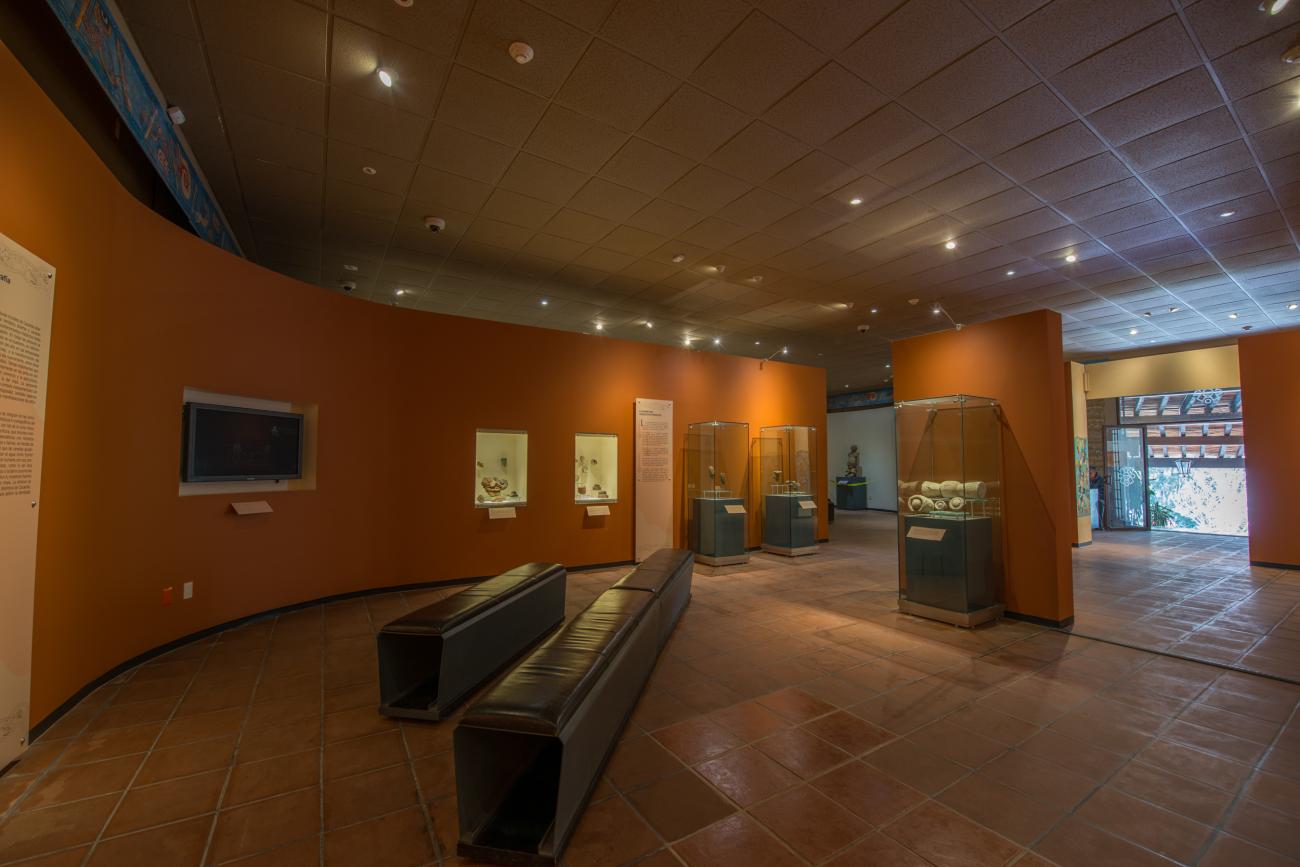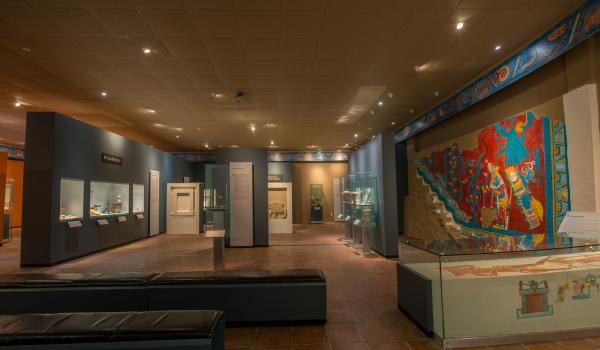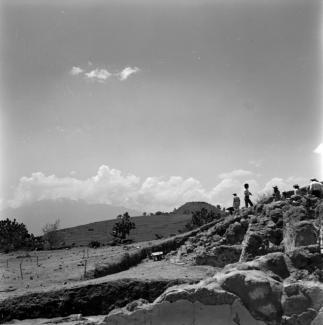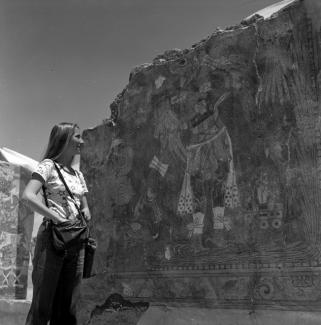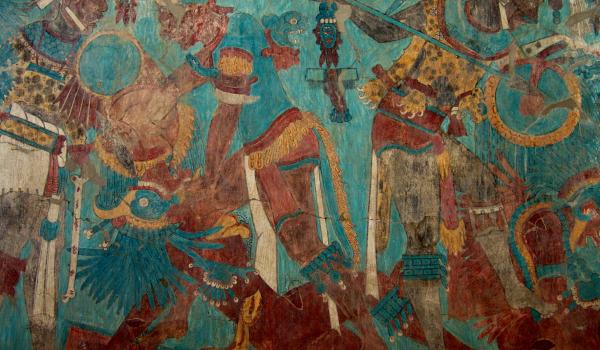The exhibition design is based on a curatorial brief which puts the development of the pre-Hispanic city of Cacaxtla into context. This site museum, established in 1986, reveals the secrets of its mural paintings, whose designs and colors are still visible after 1,000 years. The idea is to bring the public right up to within a few inches of the murals by means of life-size reproductions. This is not possible with the originals and the reproductions show us the details of the Jaguar Man, one of the figures from the doorpost of Building A, the water scenes from the Red Temple and the Scorpion Man from the Temple of Venus, as well as other images. The murals have decorative and symbolic elements from the Central Highlands as well as the Mayan region. There were also influences from El Tajin and the Oaxaca region. The museum has a collection of 164 pieces, with the 11 sculptures of the Lords of Cacaxtla being a particular highlight.
The museum is housed in a building designed for the purpose. The design and building materials were chosen to harmonize with the region’s vernacular architecture, and also with the site’s pre-Hispanic structures. This ensures that the buildings fit in with the landscape instead of interfering with, or detracting from its surroundings.
The Cacaxtla murals were discovered by chance in 1975 and since then there have been various investigation and conservation projects which have turned up great quantities of archeological materials. The majority of the objects exhibited in the museum were found in the excavations of the site, alongside a few others found by chance in the surrounding area.
Visitors are welcomed by a basalt sculpture found on the land surrounding the Xochitecatl hill. It dates to the Late Preclassic (100 BC-200 AD), in other words long before Cacaxtla’s apogee. The gallery space is divided into: the Formative Period, covering the earliest settlement at Cacaxtla in the first centuries AD; Painting Techniques; Gods and Men; and the Epiclassic period (650-950), which covers the city’s apogee.
Among the archeological finds that visitors can see are burnishers, architectural items, sculptures of the gods Tlaloc, Xipe and Tlazolteotl, ceramics, cists (burials surrounded by four vertical slabs in a square with another serving as a cover), the aforementioned Lords of Cacaxtla, anthropomorphic figures, bones, ornaments and a pair of urns with modeled personages, one of which was found by the archeologist Beatriz Palavicini in 2008. There are also reproductions of maps and codices from the viceregal period such as the Codex of Cuauhtinchan.







